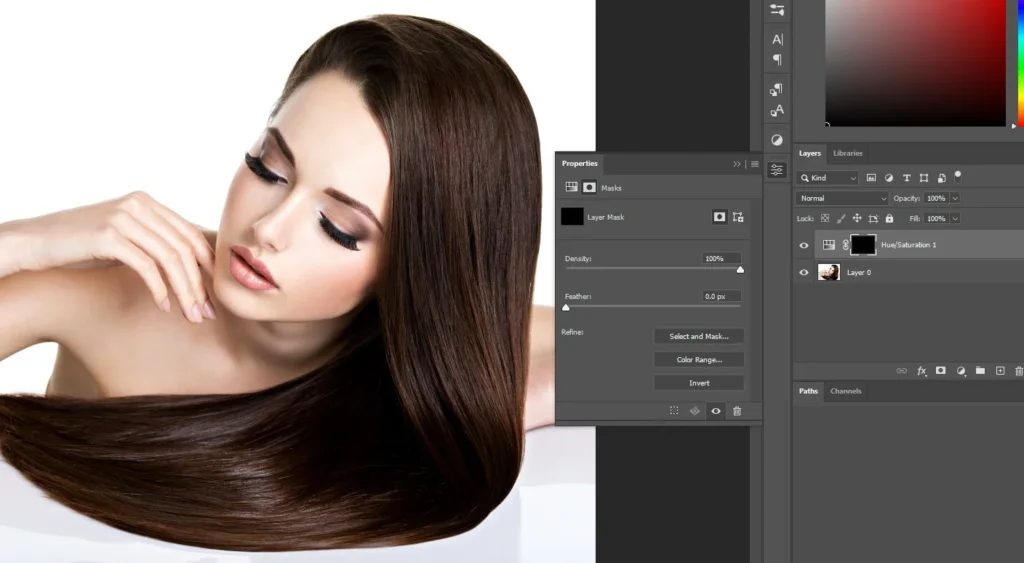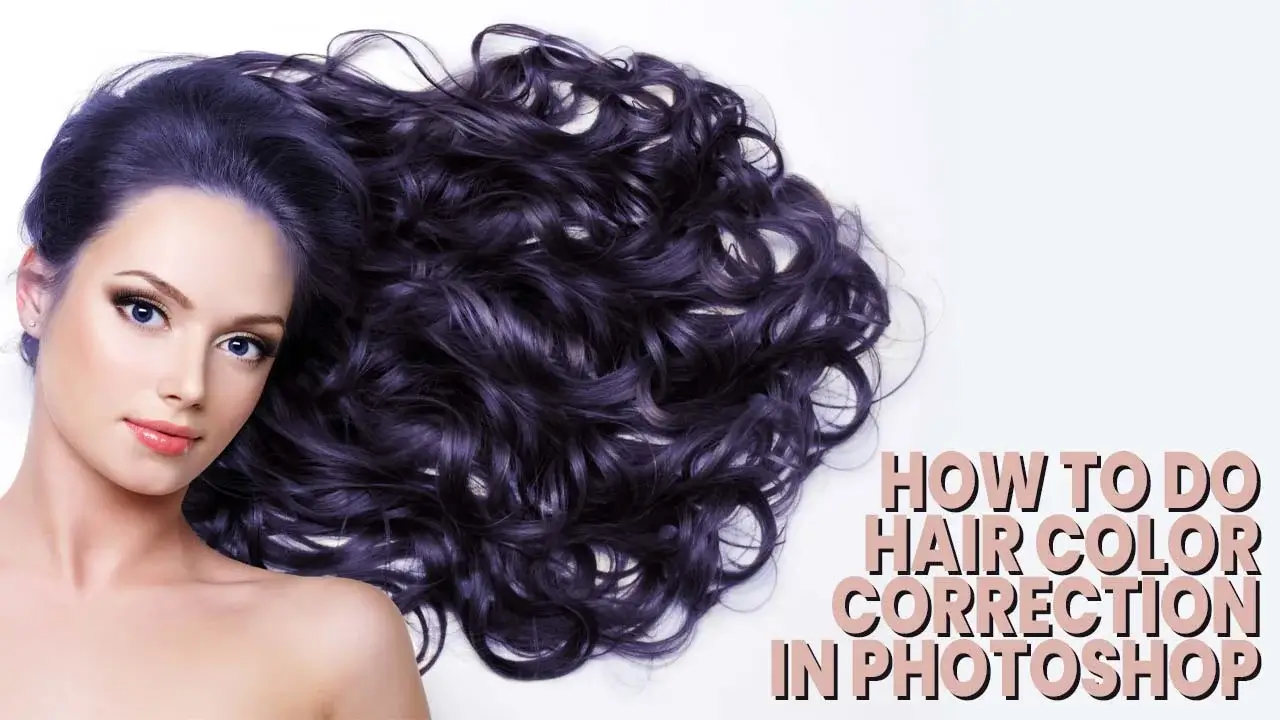Changing your hair color in real life can be expensive, time-consuming, and sometimes risky. With Photoshop, you can test endless shades — from natural tones to bold fantasy colors — in just minutes, without touching a drop of dye.
In this tutorial, we’ll use Hue/Saturation adjustment layers, masking, and blend modes to create realistic, editable hair color changes. You can apply this method to any portrait — whether it’s a client photo, a family snapshot, or even your own selfie.
Step-by-Step Hair Color Correction
Hair Color Correction in Photoshop is a tactical enhancement, and logically, there will be several steps to get the best form. However, once you are done with the whole operation, you can apply the same for any photo by changing the mask show/hide option and making remarkable changes to it. So, let’s jump into the matter and learn them step by step.

By the way, we are presenting hair color correction before and after here to give you an idea of the magical work we are about to proceed with.
Step 1 — Add a Hue/Saturation Adjustment Layer
Open your image in Photoshop. At the bottom of the Layers panel, click the New Adjustment Layer icon (half-filled circle) and choose Hue/Saturation.
Menu path: Layer > New Adjustment Layer > Hue/Saturation

Step 2 — Enable Colorize
In the Hue/Saturation dialog, check Colorize (bottom right). This applies a single color overlay to the whole image, which we’ll later isolate to the hair. At this point, your image will likely turn reddish. Don’t worry — we’ll refine it.

Step 3 — Pick Your Base Hair Color
Drag the Hue slider left or right to find a starting shade for the hair. Adjust the Saturation slider to control intensity. For example: Hue ≈ 35 and Saturation ≈ 85 gives a warm orange-red tone. The whole image is tinted now; next, we’ll mask the effect to the hair only.
If you need help choosing a color palette, tools like the Adobe Color Wheel can help you explore complementary and contrasting tones for more creative results. You can also explore Color Theory for Designers for a deeper understanding of how colors interact — ideal for choosing realistic or artistic hair tones.

Step 4 — Invert the Adjustment Layer Mask
In the Layers panel, select the white mask thumbnail next to your Hue/Saturation layer. Press Ctrl+I (Windows) or Cmd+I (Mac) to invert it. This hides the color effect completely, giving us a black mask.

Step 5 — Reveal the Color with the Brush Tool
Select the Brush Tool (B) and set Foreground Color to white. Paint over the hair area to reveal the new color. Use [ and ] to adjust brush size, and Shift + [ / ] to soften or harden edges.
For fine hair strands:
- Lower brush opacity to ~25%
- Zoom in (Alt/Option + scroll) for precision
If you make a mistake, press X to switch to black and paint to hide the effect again.


Step 6 — Refine with Blend Modes
With the adjustment layer selected, change the Blend Mode from Normal to Color or Soft Light in the Layers panel.
- Color: Changes only hue/saturation, preserving natural hair texture.
- Soft Light: Adds contrast for a more dynamic look.
Choose the one that fits your photo best.

Step 7 — Adjust Opacity
Lower the Opacity of the Hue/Saturation layer to fine-tune realism. Example: 75% opacity often blends better with natural highlights and shadows.

Step 8 — Try Different Colors Anytime
To test other shades, double-click the Hue/Saturation layer thumbnail and move the Hue slider. Adjust Saturation for vibrancy and experiment with different blend modes for creative effects. Example: Hue ≈ 211 + Linear Dodge (Add) blend mode + 60% opacity gives a striking bluish-black hair color.

Final Result
With just a Hue/Saturation adjustment layer, a mask, and a few brush strokes, you can achieve professional-looking hair color changes in minutes — and tweak them anytime.
Conclusion — Mastering Hair Color Correction in Photoshop
Hair color correction in Photoshop is more than just a fun experiment — it’s a powerful skill for photographers, designers, and anyone who wants to explore creative styling without commitment. By combining Hue/Saturation adjustments, masking, and blend modes, you can produce realistic, editable results that preserve hair texture and detail.
If you also work in Lightroom, you can achieve similar enhancements with Lightroom Color Correction techniques, perfect for batch editing or refining skin tones alongside hair color changes.

